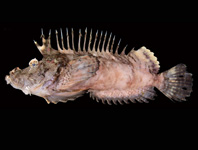Abstract
We describe a gall midge Macarangamyia itiokai Elsayed & Tokuda gen. n., sp. n. belonging to the subtribe Schizomyiina (Diptera: Cecidomyiidae: Asphondyliini) inducing petiole galls on Macaranga bancana (Miq.) in Lambir Hills National Park, Borneo, Malaysia. The new genus is distinguishable from all known genera of Schizomyiina by the unique dorsally-placed aedeagus slit, the short, membranous, protrusible ovipositor, with scattered strong setae ventrally and dorsally, and the presence of spiracles on all larval thoracic segments. It is compared and separated from its closely related Oriental genera of Schizomyiina.
References
Felt, E.P. (1918) New Philippine gall midges, with a key to the Itonididae. The Philippine Journal of Science, 13, 281–325.
Felt, E.P. (1927) Two remarkable East Indian gall midges. Treubia, 9, 382–384.
Fiala, B., Grunsky, H., Maschwitz, U. & Linsenmair, K.E. (1994) Diversity of ant-plant interactions: protective efficacy in Macaranga species with different degrees of ant association. Oecologia, 97 (2), 186–192.
https://doi.org/10.1007/BF00323148Fiala, B., Jakob, A., Maschwitz, U. & Linsenmair, K. (1999) Diversity, evolutionary specialization and geographic distribution of a mutualistic ant-plant complex: Macaranga and Crematogaster in South East Asia. Biological Journal of Linnean Society, 66, 305–31.
https://doi.org/10.1111/j.1095-8312.1999.tb01893.xFiala, B., Maschwitz, U., Pong, T. & Helbig, A. (1989) Studies of a South East Asian ant-plant association: protection of Macaranga trees by Crematogaster borneensis. Oecologia, 79, 463–470.
https://doi.org/10.1007/BF00378662Fiala, B., Maschwitz, U. & Tho, Y.P. (1991) The association between Macaranga and ants in South East Asia. In: Huxley, C.R., Cutler, D.F. (Eds.), Interactions between ants and plants. Oxford University Press, Oxford, pp. 263–270.
Gagné, R.J. & Jaschhof, M. (2017) A Catalog of the Cecidomyiidae (Diptera) of the World. Fourth Edition, 762 pp. Available from: https://www.ars.usda.gov/ARSUserFiles/80420580/Gagne_2017_World_Cat_4th_ed.pdf (accessed 9 August 2018)
Gagné, R.J. (1994) The Gall Midges of the Neotropical Region. Cornell University Press, Ithaca, New York, 352 pp.
Gagné, R.J. (1969) A review of Felt's Philippine genera and species of Cecidomyiidae (Diptera). Pacific Insects, 11, 561–570.
Inui, Y., Shimizu-kaya, U., Okubo, T., Yamasaki, E. & Itioka, T. (2015) Various chemical strategies to deceive ants in three Arhopala species (Lepidoptera: Lycaenidae) exploiting Macaranga myrmecophytes. Plos One, 10 (4), e0120652.
http://dx.doi.org/10.1371/journal.pone.0120652Itioka, T. (2005) Diversity of anti-herbivore defenses in Macaranga. In: Roubik, D.W., Sakai, S. & Karim, A.A.H. (Eds.), Pollination ecology and the rain forest: Sarawak studies. Springer, New York, pp. 158–171.
https://doi.org/10.1007/0-387-27161-9_14Itioka, T., Nomura, M., Inui, Y., Itino, T. & Inoue, T. (2000) Difference in intensity of ant defense among three species of Macaranga myrmecophytes in a Southeast Asian dipterocarp forest. Biotropica, 32 (2), 318–326.
https://doi.org/10.1111/j.1744-7429.2000.tb00475.xKolesik, P. & Butterill, P.T. (2015) New gall midges (Diptera: Cecidomyiidae) from Papua New Guinea. Austral Entomology, 54 (1), 79–86.
https://doi.org/10.1111/aen.12095Kolesik, P. (1995) A new species of Eocincticornia Felt (Diptera: Cecidomyiidae) on Eucalyptus fasciculosa in South Australia. Australian Journal of Entomology, 34 (2), 147–152.
https://doi.org/10.1111/j.1440-6055.1995.tb01308.xKolesik, P. (1998) A new genus and two new species of gall midge (Diptera: Cecidomyiidae) damaging young branches of Eucalyptus spp. in South Australia. Transactions of the Royal Society of South Australia Incorporated, 122 (1/2), 45–53.
McAlpine, J.F., Peterson, B.V., Shewell, G.E., Teskey, H.J., Vockeroth, J.R. & Wood, M. (Eds.) (1981) Manual of Nearctic Diptera. Vol. 1. Research Branch, Agriculture Canada. Monograph. No. 27. Canadian Government Publishing Centre, Hull, 674 pp.
Nayar, K.K. (1953) Schizomyia macarangae, a new species of gall midge (Diptera, Itonididae). Proceedings of the Zoological Society of Bengal, 6, 131–134.
Okubo, T., Yago, M. & Itioka, T. (2009) Immature stages and biology of Bornean Arhopala butterflies (Lepidoptera, Lycaenidae) feeding on myrmecophytic Macaranga. Lepidoptera Science, 60 (1), 37–51.
Shimizu-kaya, U. & Itioka, T. (2016) Reduced ant defenses in Macaranga myrmecophytes (Euphorbiaceae) infested with a winged phasmid Orthomeria cuprinus. Ecological research, 31 (5), 665–672.
https://doi.org/10.1007/s11284-016-1374-7Shimizu-kaya, U., Kishimoto-Yamada, K. & Itioka, T. (2015) Biological notes on herbivorous insects feeding on myrmecophytic Macaranga trees in the Lambir Hills National Park, Borneo. Contributions from the Biological Laboratory Kyoto University, 30 (2), 85–125.
Tokuda, M. (2012) Biology of Asphondyliini (Diptera: Cecidomyiidae). Entomological Science, 15, 361–383.
https://doi.org/10.1111/j.1479-8298.2012.00539.xWhitmore, T.C. (2008) The genus Macaranga: a prodromus. Royal Botanic Gardens, Kew, 293 pp.
Yamasaki, E., Inui, Y. & Sakai, S. (2016) Ant-repelling pollinators of the myrmecophytic Macaranga winkleri (Euphorbiaceae). Evolutionary Biology, 43 (3), 407–413.
https://doi.org/10.1007/s11692-015-9365-0Yukawa, J. (1971) A revision of the Japanese gall midges. Memoirs of the Faculty of Agriculture, Kagoshima University, 8, 1–203.

